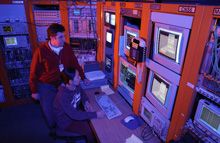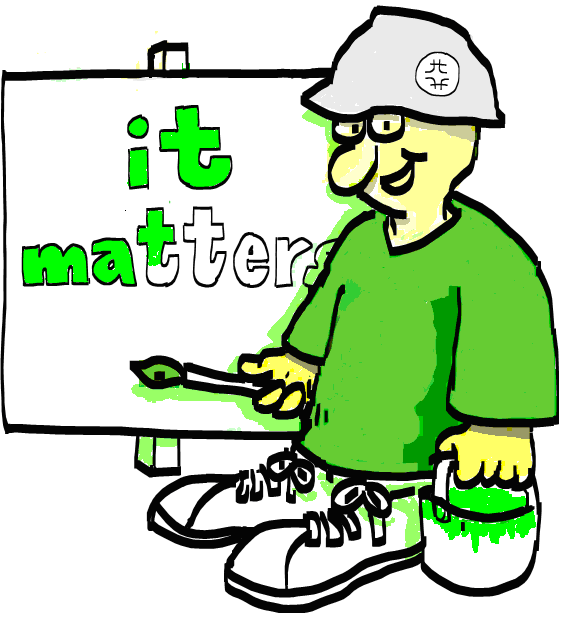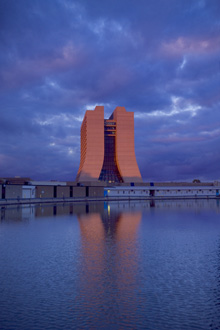 | Wednesday, November 16, 2005 |
|
Wednesday, November 16
Thursday, November 17 |
|
Extended Forecast |
Secon Level 3 |
|
Wednesday, November 16 - French Onion - Texas Style Meatloaf Sandwich - Grilled Chicken with Black Bean & Corn Salsa - Italian Sausage with Peppers - Smoked Turkey Panini Pesto Mayo - Sausage & Pepperoni Combo - Fettucine Chicken The Wilson Hall Cafe accepts Visa, Master Card, Discover and American Express at Cash Register #1. |
|
Wednesday, November 16
Thursday, November 17
Chez Leon Menu |
| Fermilab Today is online at: http://www.fnal.gov/today/ Send comments and suggestions to today@fnal.gov Fermilab Today archive Hurricane Relief Page Fermilab Today PDF Version Fermilab Result of the Week archive Fermilab Safety Tip of the Week archive Linear Collider News archive Fermilab Today classifieds Subscribe/Unsubscribe to |
| A New Record Every Week for Tevatron Luminosity | Last week, Fermilab once again set new world records for peak and integrated luminosity. At 8:00 p.m. on November 10, the peak luminosity reached 167E30cm-2sec-1. Even better, Fermilab surpassed its recent integrated luminosity record of 21 inverse picobarns as well. Between Monday, November 7 and Monday, November 14, the Tevatron's weekly integrated luminosity rose to 23 inverse picobarns, a record for the second straight week. |
Crash Course in Luminosity, Key to Discovery at Fermilab |
| This is the fourth story in a series that explains what luminosity is, and why we've recently gotten better at producing it. This story highlights a process called "slip-stacking," which produces more antiprotons for the Tevatron. |
|
Slip-stacking to bombard pbar target Ioanis Kourbanis judges his upgrade contributions by the state of the antiproton target. He's looking for damage to the target, and damage is what he hopes to find. Kourbanis, of the Accelerator Division's Main Injector Department, has been coordinating the introduction of the technique called "slip-stacking" for the transfer of protons from the Booster to the Main Injector, with the final goal of increasing the number of protons on the antiproton target-and thus, increasing antiproton (pbar) production. The slip-stacking scheme was proposed by Chuck Ankenbrandt of the Accelerator Division in 1981 and was first studied in the Main Ring accelerator in the late '90s. The scheme was incorporated into Run II upgrades with a design goal of achieving 8E12 protons per pulse on target. In December 2004, the antiproton target was being hit by about 4.5E12 protons per pulse; since slip-stacking has been introduced, the antiproton target has seen pulses in excess of 8.0E12 protons. Now Kourbanis has to start considering the issue of damage to the antiproton target resulting from the increased intensity. He doesn't mind. "That means we've been successful," he says. In Tevatron luminosity, all paths ultimately lead back to pbars. Increasing the number of collisions in the Tevatron means increasing the number of antiprotons. The only way to increase antiproton production is to fire more protons from the Main Injector at the antiproton target. But the Main Injector gets its protons from the Booster, and therein lies a challenge. The Booster accelerates protons from an initial energy of 400 MeV to a final energy of 8 GeV in 0.033 seconds, the largest proportional increment in the lab's accelerator chain. But this workhorse accelerator is just 475 meters in circumference, compared to 3.3 kilometers for the Main Injector. It takes seven "Booster-fuls," or batches, to fill the Main Injector. Since building a bigger Booster wasn't in the cards, the question was how to get significantly more protons into the Main Injector, to send more protons to the antiproton target. Complicating the question: only one MI batch per pulse can be sent to the antiproton target. So how could it be done?
The answer: By putting two Booster batches in the same place at the same time, in orbit around the Main Injector.
|
|
From PhysOrg.com, November 15, 2005: Watson Lecture: Exploring Einstein's Legacy November 25 marks the 90th anniversary of Einstein's formulation of his theory of general relativity, which describes gravity as a consequence of the warping of space and time. Since then, physicists have been trying to understand and test general relativity's predictions, including the existence of black holes (which are made not of matter but of whirling space and warped time), gravitational waves, and the acceleration of the universe. "We don't understand the predictions very well because we are not clever enough to solve Einstein's equations when spacetime is highly warped and dynamical," says Kip Thorne, the Richard P. Feynman Professor of Theoretical Physics at the California Institute of Technology.
"Einstein's predictions have turned out to reach into the domain of our every day technology. For example, time flows more slowly on the earth than it does in the Global Positioning System's satellites high above the surface of the earth. The software that computes where we are from the GPS signals must correct for the warping of time from there to here, or the system would fail," Thorne says.
|
|
Fermilab's Icon for "Green Design" Needs a Name
|
||
|
||
|
So far, our sustainability icon has been known simply as "The Green Guy." On September 30, we asked you to name him, and we received an overwhelming response. We've chosen our favorites from the names you submitted, and now we need your help picking the best one.
Please vote for your favorite name by Monday, November 21. |
| Volunteer Reception to Thank Education Helpers |
Fermilab Director Pier Oddone has invited about 300 employees, users and contractors to a reception honoring their support of Fermilab educational programs. The Volunteers Reception will be held at 5 p.m. on Wednesday, November 30, on the Wilson Hall second floor crossover. "There's a lot of talent and skill here that we need to make our educational programs a success," said Priscilla Meldrim, of the Education Office. "We need these volunteers. We could not run without them."
Volunteers include those who help keep exhibits at the Lederman Science Center running, provide answers to physics questions from the public at Ask-a-Scientist events, make presentations to local classrooms, help with scout projects and assist docents and others in the Education Office with group tours. Volunteers also provide ideas and clarify the science for classroom materials and exhibits. "They're really the inspiration, particularly for junior high and high school students," said Meldrim, who coordinates school visits to Fermilab. "We want students to gain an appreciation for the science enterprise - who scientists are, how they develop research questions, how they approach their work." Volunteers also play an important role in Fermilab visits from college students and adults, said Nancy Lanning, of the Education Office. "For older students, it's an opportunity to ask the nitty-gritty questions," she said. Director's Award nominations for especially dedicated volunteers were made last month. The winner will be announced at the reception and given a $1,000 award. "We are grateful to the directorate for sponsoring this," Lanning said.
For information on how to volunteer with the Education Office, contact Nancy Lanning at lanning@fnal.gov.
|
|
|
Inclement Weather Snow Removal While Wilson Hall has a snow melt system for the front center plaza, portions of the front sidewalk, and stairs to the east and west parking lots, the snow melt system does not cover all front areas of the plaza or all sidewalks. For this reason, residents will see barricades and ropes to section off the areas not on the snow melt system. During periods of heavy snow and sub zero temperatures beyond the design criteria of the snow melt system, additional barricades will be placed in the front plaza area until snow removal crews can respond. As in previous winters, sections of North Eola Road and West Wilson Road may be closed during extreme winter conditions.
Give the Gift of Good Health
Entertainment Books are On Sale
|


